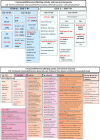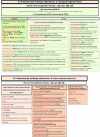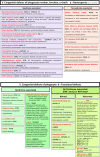The 2017 IUIS Phenotypic Classification for Primary Immunodeficiencies
- PMID: 29226301
- PMCID: PMC5742599
- DOI: 10.1007/s10875-017-0465-8
The 2017 IUIS Phenotypic Classification for Primary Immunodeficiencies
Abstract
Since the 1990s, the International Union of Immunological Societies (IUIS) PID expert committee (EC), now called Inborn Errors of Immunity Committee, has published every other year a classification of the inborn errors of immunity. This complete catalog serves as a reference for immunologists and researchers worldwide. However, it was unadapted for clinicians at the bedside. For those, the IUIS PID EC is now publishing a phenotypical classification since 2013, which proved to be more user-friendly. There are now 320 single-gene inborn errors of immunity underlying phenotypes as diverse as infection, malignancy, allergy, auto-immunity, and auto-inflammation. We herein propose the revised 2017 phenotypic classification, based on the accompanying 2017 IUIS Inborn Errors of Immunity Committee classification.
Keywords: Classification; IUIS; Inborn errors of immunity; Phenotypic; Primary immunodeficiencies.
Conflict of interest statement
The authors declare that they have no conflict of interest.
Figures













References
MeSH terms
Grants and funding
LinkOut - more resources
Full Text Sources
Other Literature Sources

